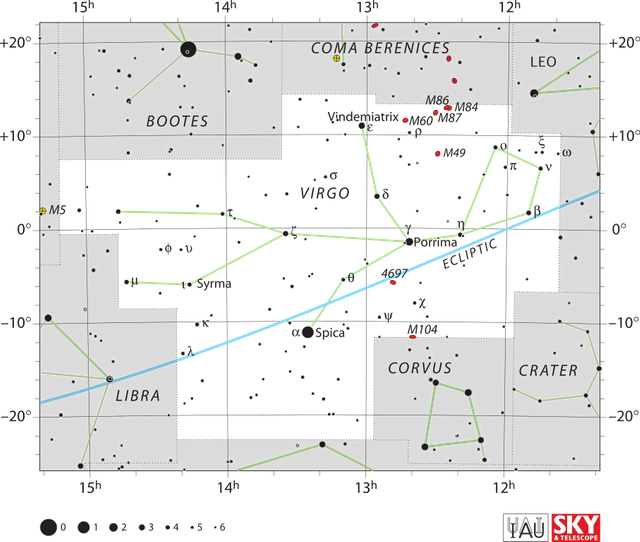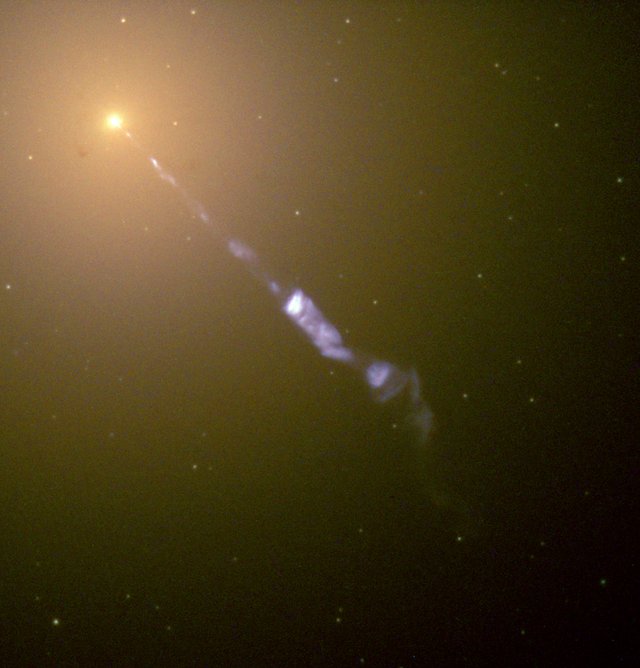Astronomical Observations #30: Messier 87
In this episode we will take a look at the great elliptical galaxy in the Virgo constellation. This object is located about 53 million light years from Earth. It is the largest and brightest galaxy in the Virgo galaxy cluster. This is one of the most active galaxies we know. Let's try to look at it closely.

By Adam Block/Mount Lemmon SkyCenter/University of Arizona link [CC BY-SA 4.0 license]
The M87 is located close to the center of the galaxy cluster in Virgo and is one of the largest galaxies near our galaxy (the Milky Way). It emits radio waves and is a very strong source of X-rays. If man's eyes were sensitive to X-rays, the M87 would shine brightly like the moon in our sky! Spiral galaxies have characteristic arms, while elliptical galaxies look like bright balls without special characters and resemble the spiral galaxy nucleus itself. Unfortunately, we won't see the spectacular spiral arms here. To find the M87 in the sky, you have to search the area from Denebola, a star of brightness +2 magnitude in the constellation of Leo to the constellation of the Virgo. Sometimes you can confuse an object with nearby galaxies M84 and M86.

By IAU and Sky & Telescope magazine (Roger Sinnott & Rick Fienberg) link [CC BY 3.0 license]
The M87 galaxy has a brightness of around +9 magnitude, so it is only visible through binoculars and away from city lights. In the sky, the object occupies an area with a diameter of 7 angular minutes, i.e. about a quarter the size of a full moon. With large binoculars of type 15 X 70 and above, the M87 looks like an oval object that looks like a comet. In a small telescope, the galaxy looks like a bright, blurred sphere, similar to the nucleus of many spiral galaxies. Using larger instruments will not do much to improve the image, as the object has a fairly homogeneous structure. With a large telescope, the M87 will simply be brighter.

By NASA and The Hubble Heritage Team (STScI/AURA) link [Public domain]
The source of radiation from the M87 galaxy is probably a supermassive black hole that creates a giant whirlpool in the center of the object. Research indicates that its size exceeds the size of our Solar System, and its mass is comparable to the mass of 5 billion Suns! This galaxy has captured and absorbed many other smaller galaxies in its lifetime, increasing its mass to enormous values. From the M87 nucleus runs a large Jet visible in the photo above. Its length is estimated at a distance of about 5,000 light years! It is a stream of matter emitting radio waves, X-rays, gamma rays and visible light. Unfortunately, only huge telescopes in observatories can observe it.
Greetings to lovers of Astronomy!
References:

This post has been voted on by the SteemSTEM curation team and voting trail in collaboration with @curie.
If you appreciate the work we are doing then consider voting both projects for witness by selecting stem.witness and curie!
For additional information please join us on the SteemSTEM discord and to get to know the rest of the community!